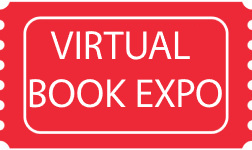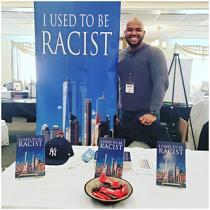I Used To Be Racist: Applying Action with Racial Dialogue
Protecting a child’s body ranges from securing the car seatbelt to placing a helmet on their head when they ride a bike. Everyday accidents resulting from a child’s explorative behaviour is normally rectified with a kiss from a parent topped off with a band-aid. What is the solution to protecting the most vulnerable part of the body: their brain? What are preventative methods from negative exposure through visual stimulus such as television? In his debut memoir ‘I Used to be Racist’, J.L. Raynor scribes his life from internalizing the American tragedy of 9/11 and projecting implanted beliefs onto the undeserving population of Arab descent.
Jason grew up in the capital of diverse people living in a dense population, New York City. In 2001, when he was supposed to think middle school thoughts such as how to convince his mother to purchase the newest video system, he witnessed what came to be the most devastating event to happen on American soil. This attack triggered a pain in his heart and mind due to his mother once working in what he considered to be his favourite buildings. Lacking an ability to understand what transpired, Jason tried to engulf knowledge through what he believed to be a trusted source of information in television news outlets.
Uninterrupted reception from television propaganda has shown negative effects on a child’s brain because trauma can be imprinted. According to Dana Rose Garfin in her article ‘Explainer: How the pain of 9/11 stays with a generation’, researchers have found that children’s exposure through television propaganda regarding 9/11 events leads to xenophobia. This explains how Jason, a thriving, healthy 10-year-old, who never had an issue or overt negative knowledge with people of different cultures, was able to develop a disdain of people who believed in Islam and identified as Arab. Although living in a structured home, parental assistance in learning how to decipher media tactics from day to day interaction with his immediate social environment did not occur, leaving his beliefs of hatred to run rampant.
'I Used to be Racist’ discusses multiple incidents that occurred in a thirteen-year time period from post 9/11 to his college years where he experienced a similar treatment of being discriminated against based on the colour of his skin. The journey became a humbling experience, as Jason became wiser from his daily encounters to later on in life becoming a Trauma Informed Approaches instructor. Recognizing effective methods of how people should treat others changed Jason’s path of what he has identified as his awakening to self-awareness. His newfound quest to challenge human nature in the treatment of people was a result from self-evaluation.
Self-taught in learning the ways of the human spirit, Jason has heard stories from all types of American and Canadian citizens that would be shameful to share in public once upon a time. One of Jason’s philosophies is to stand firm on creating non-judgmental spaces, allowing opportunity of pure unapologetic discussion about race among everyday people. The time for speaking out and speaking up against discrimination is not going to happen on the television. The revolution is never televised, only deterioration is recognized. Jason has engaged hundreds of readers during his recent book tours where he listens to what hope sounds likes. Hope sounds like change, hope is work, hope is healthy dialogue and being around readers has been a great start down that path.
Dr. Steven Convey in his work ‘The 7 Habits of Highly Effective People’, Habit 5 is ”Seek first to Understand, Then to be Understood”. Confronting his past beliefs of negative depictions of Arab people was a challenge for Jason, being that the last thing we want to recognize is what we lack as a human. Through learning his flaws in understanding people, which in this case was both compassion and communication skills, Jason is working on developing an educational curriculum that will help children as young as 3 years old identify race and difference in people from an organic lens of how children learn from their immediate environment of influence. He hopes his work will spark change to the horrific circumstances of the current American state of racial climate.
‘I Used to Be Racist” is a 1st person account of vulnerability, about not being in control. Jason couldn’t control the course of the deadly planes, he couldn’t change the anxiety he initially felt once the planes hit, and definitely without the proper guidance, Jason was all but in control on his internal feelings that was unnecessary for thirteen years. Consciously turning his trust issues and high sensitivity to his surroundings where Arab people were in proximity into love, self-awareness, and understanding has been a recipe for success in Jason’s work. To heal trauma is to recognize trauma. Reading ‘I Used to Be Racist’ sets the tone for starting anew. You are the summary of your yesterday’s meaning that each day can start as Day One.
To purchase J.L. Raynor’s work please visit his website, https://jlraynortheauthor.com/.
Use Promo Code: JLRNEWYEAR




